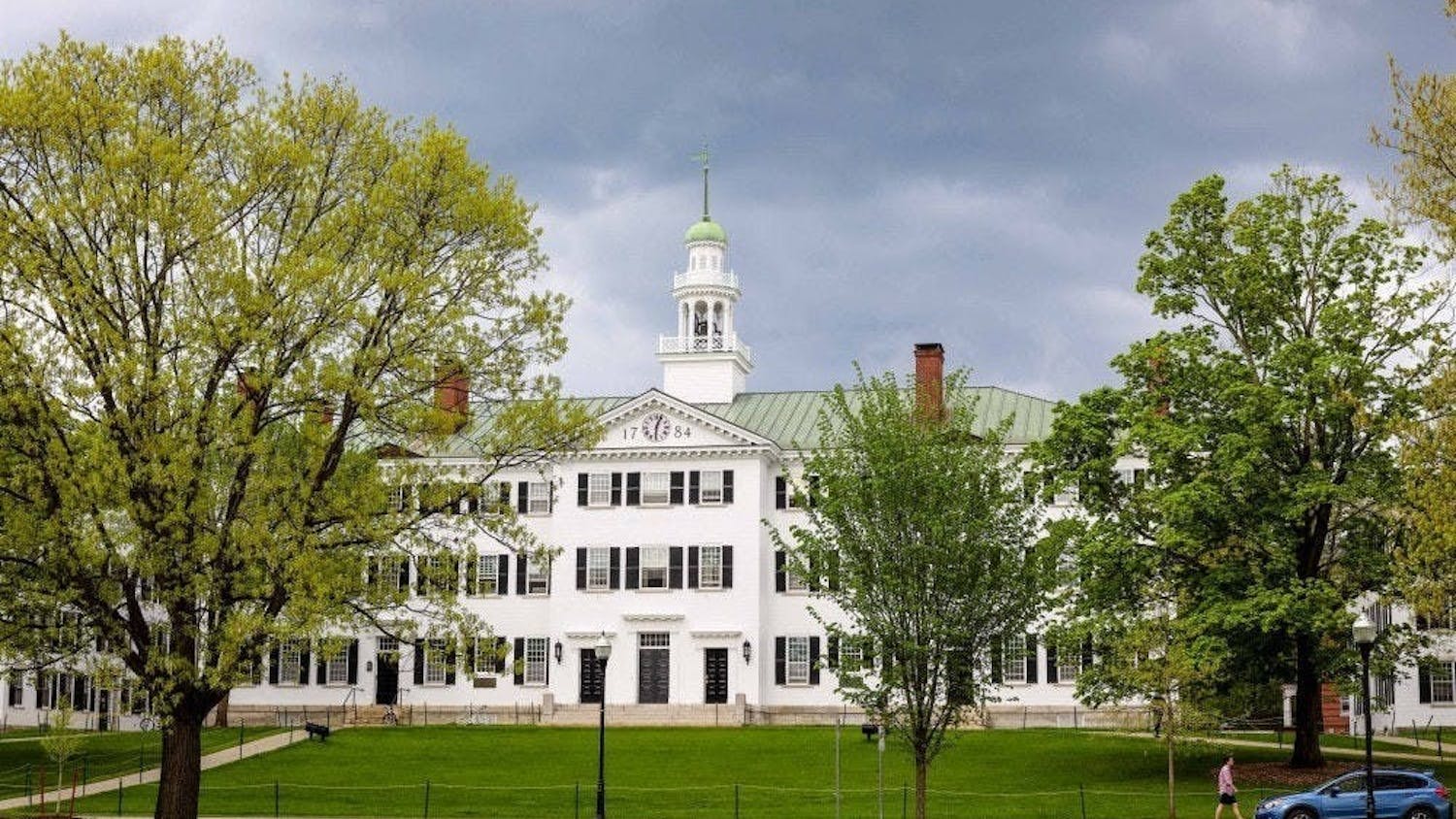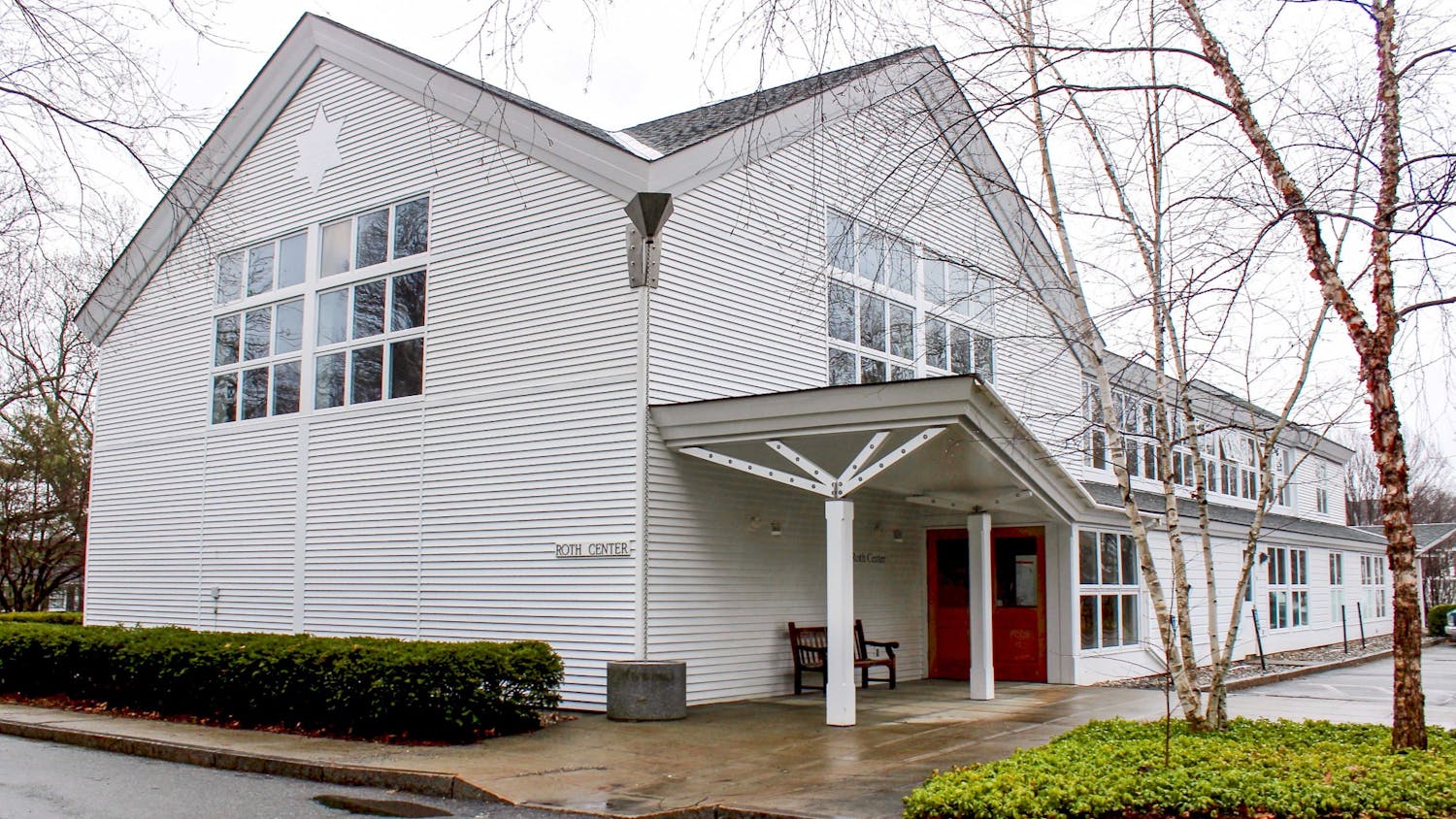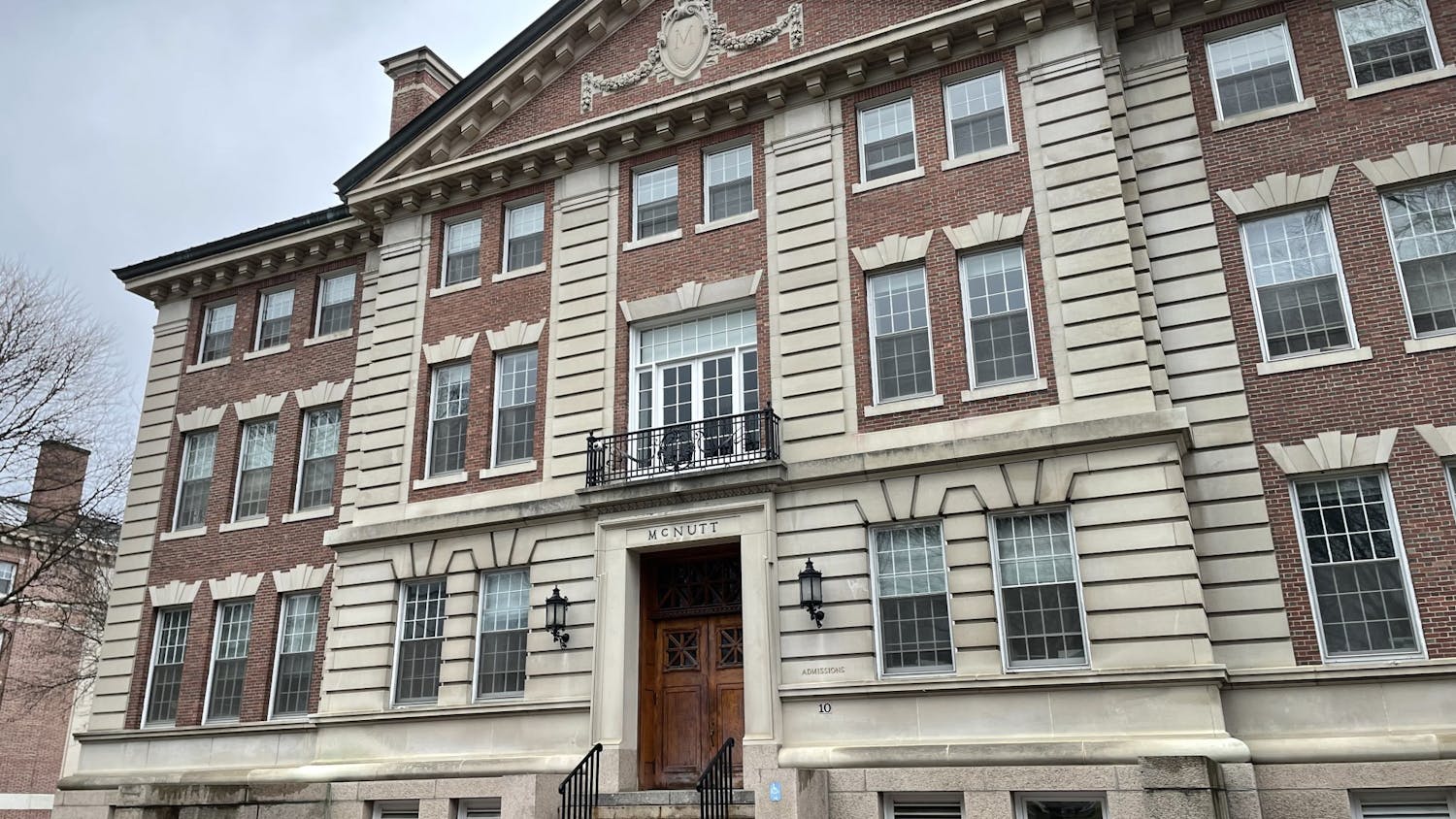Despite its explicit charter mission to educate Native American youth, the College largely ignored this commitment for its first 200 years. Between 1769 and 1969, the College graduated just 19 Native students.
In 1970, College President John Kemeny reaffirmed the College’s commitment to its founding principle to educate Native students in his inaugural address. Native American studies professor N. Bruce Duthu ’80 explained that the late ’60s and early ’70s were rife with questions and debates about challenging traditional mainstays of power, both at the College and society at large. For example, the College was also contemplating coeducation, ultimately deciding to admit women in 1972.
“It wasn’t like Dartmouth suddenly woke up,” Duthu said. “There were nudges from society in general.”
As part of its re-commitment, the College created the Native American Program in 1970, staffed by administrators who provide support to Native students. The extant program, formerly comprised of a director and program coordinator, recently grew to include a director, assistant director and administrative assistant, according to interim director of the NAP Kianna Burke ’12. Burke and Duthu said a need for more student support compelled the expansion.
The creation of the NAP was followed by the establishment of the Native American Studies academic program in 1972, which has expanded from a modest program with one part-time professor to one staffed by eight faculty members and visiting faculty with major/minor course offerings and its own off-campus program, established in 2015.
Despite these visible commitments to the Native community, Duthu said from a social standpoint, the College was “very volatile” during the late ’70s. He recalled, for instance, being questioned directly as a Native student about his position on the Indian symbol as the College’s mascot, which was discontinued in 1974 but remained controversial.
“What if I had never thought of a position on the Indian symbol?” Duthu asked.
Kianna Burke’s sister Kimonee Burke ’18, former president of Native Americans at Dartmouth and the former undergraduate advisor for the Native American House, said discussion of the mascot still “crops up” every few years. When she and other Native students approached the administration with the possibility of imposing repercussions for students who brought up the mascot, Kimonee Burke said the response was less than supportive.
“They asked, ‘Well, why is it such a problem?’” Kimonee Burke said. “Instead of, ‘Yes, we understand why this is offensive and why something needs to be done.’”
Evan Barton ’20, the current social chair of NAD and co-chair of the 2018 Powwow, shared a similar story of the administration’s response to concern about the Hovey murals. Currently located in Sarner underground, the Hovey murals consist of four painted scenes presenting offensive depictions of Native people and the College’s origins. This past April, a study group comprised of faculty and students was created to assess the future of the murals.
Barton said that there was a lack of institutional support for efforts to remove the murals, even from within the Native community. He said the NAP and NAS wanted to “keep with the status quo” and “not upset a balance,” which he said was understandable but still disappointing.
“It didn’t feel like they had our back sometimes, which is hard, because those are the people that should,” Barton said.
However, he noted that the eventual solution of a study group achieves NAD’s original goal, which is to evaluate the murals’ role on campus.
Duthu noted that during the 70s, the presence of Native students was seen as a political statement, as they represented the College’s efforts to reach out affirmatively to certain groups, which some considered favorable treatment.
“In some quarters, [these efforts] were seen as excluding ‘better qualified students,’” Duthu said. “The same discourse happened with women, that they were taking the place of ‘better qualified’ white guys. That persisted for quite some time.”
Duthu said this rhetoric has dramatically shifted in recent decades.
“The sense of welcome and acceptance of both Native students, and more deeply the value of diversity, is so much better entrenched than it was back in the 70s,” Duthu said.
Barton noted, though, that because of the College’s origins, the Native community remains a politicized presence.
“NAD is inherently political,” Barton said. “Being here as an indigenous student or a Native student is fulfilling that charter, and for 200 years they forgot to do that.”
Barton emphasized that the experience of every Native student at the College is different, and that his own experience, being a white-passing male, is particularly different than that of Native women on campus.
“This campus has a history of violence against women, and that rate goes up when you’re Native,” Barton said. “One in three indigenous women will be sexually assaulted or raped in their lifetime ... it might be [higher] on this campus, because of how concentrated the population is, and the incident rates.”
Kianna Burke remarked that she has seen improvements since she came to the College in 2008, such as expansions in NAP’s staff capabilities, programming and overall autonomy. From a social perspective, Kianna Burke noted the increase in activism around social justice issues, which she said is mirrored on a national scale as well.
“There were not many protests on campus when I was here,” Kianna Burke said. “I’d say it’s very much a normal thing now. People are aware of the issues and their part in them, and how they can change and support all of the different communities.”
However, Duthu and Kimonee Burke noted that there remains enormous room for improvement. Kimonee Burke said she’s seen cultural insensitivity — more by professors than students, which she attributed to generational differences — as well as a general lack of education and awareness about the role of the Native community at Dartmouth.
“In terms of support on campus, I don’t say ignorance to be rude,” Kimonee Burke said. “But I think there’s ignorance about why it matters that this college has Native history, why it matters that it’s on Native land, why it matters that students be supported.”
She recalled an instance in which, as a UGA at the Native American House, she tried to get the right to bless the house. Since the blessing would involve burning sage, which could potentially set off fire alarms, Safety and Security viewed the blessing as a “hassle,” Kimonee Burke said. She said this instance was reflective of insufficient support for Native students’ spiritual needs.
“There’s so much explanation and so much advocacy that it almost seems counterproductive,” Kimonee Burke said. “Something like that should be simple.”
Duthu noted that the Native community has received varying levels of institutional support under different College presidents. Since President Kemeny, Duthu said the two presidents who have “matched, if not exceeded his level of commitment and concern for the Native community” were President emeritus Jim Wright and President emeritus Jim Freedman.
Kimonee Burke noted that currently, the NAP lacks sufficient funds to provide necessary programming. Moreover, although NAS is stable and sizable compared to other interdisciplinary programs, it remains a program and not a full department.
“[NAS] still has a lot of ground to cover in terms of establishing itself in the academic world at large, outside of Dartmouth,” Barton said.
Steven Abbott, associate director of admissions and coordinator of Native outreach, noted that a challenge of the College’s original charter and its recommitment is its ambiguity.
“The charter and recommitment are openly acknowledged here, which is great to see, but I don’t think it’s even been particularly well-defined,” Abbott said. “That’s one of the things we’re looking to now, is when we say we’re committed to Native students and Native communities, what does that actually look like?”
Despite extant issues and deficits, Duthu, Kianna Burke and Kimonee Burke pointed to several markers of progress for the Native community in recent years.
Duthu said enrollment of Native students was “fairly modest,” with 10 to 15 students per class, during and following his time at Dartmouth. Today, there are 220 Native students currently enrolled at the College, which Duthu said is the highest number he can recall in recent years.
Both admissions and graduation rates for Native students have increased in recent decades, the latter of which Duthu said is particularly significant. However, Native students still have comparably low graduation rates; 98 percent of white and Asian students graduate from the College in four years, compared to 92 percent of black and Latino students, according to Duthu. Duthu said the percentage of graduating Native students sometimes aligns with the latter group, but has dipped as low as 88 percent in some years.
Duthu noted that due to the small proportion of total Native students, these numbers can be easily skewed by one or two students. However, he said the number does not concern him, referencing a conversation he had with his classmate and former chair of the Board of Trustees Bill Helman ’80 in which Helman approached him about the lower graduation rates of Native students.
To Helman’s surprise, Duthu told him that if the College started graduating Native students at rates of 98 or 99 percent, he would leave Dartmouth.
“The reason that I’m comfortable with those numbers is it means Dartmouth is taking risks on students,” Duthu said. “It isn’t just recruiting the sure vets, the students that Harvard [University], Stanford [University] and Yale [University] are also going to admit.”
If Dartmouth only accepts the “safe students,” its charter commitment loses its meaning, Duthu explained. He explained that the College achieves this through extensive and intentional outreach to Native communities.
“We send recruiters to schools that most other [Ivy League schools] couldn’t place on a map,” Duthu said.
Abbott said that part of President Kemeny’s recommitment in 1970 included a mandate to the admissions office to start working with “the best and brightest of interested Native students.” He added that his role as a Native outreach coordinator in the admissions office has existed for at least 30 years.
Abbott said the College often has name recognition in Native communities, and is seen as more friendly toward Native students than many peer institutions that lack the “depth or link with the history.”
“In most [Native] communities you go to, it always seems to me, just anecdotally, that you always run into somebody who knows somebody [from Dartmouth],” Abbott said.
However, he acknowledged the competition between the College and state schools in attracting Native students, and the occasional skepticism he sees regarding the benefits of a liberal arts education.
“At the heart of the liberal arts experience is that idea of critical thinking, of engagement, of molding and shaping,” Abbott said. “And I think that’s so critical, and so critically needed in Indian country right now.”
Duthu and Abbott noted the importance of contextualizing numbers when comparing the proportion of Native students at state universities to those at Dartmouth. There may be 500 Native students in a given class at a state school in Arizona, Duthu said, but 85 percent of them might be from Arizona. Comparably, the Native population at the College is “much more tribally diverse,” Duthu said.
Abbott added that graduation rates for Native students might be only 20 to 30 percent at a state university, compared to significantly higher numbers at the College. Duthu also noted that the College has more Native alumni than all other Ivy League schools combined.
In addition to improved graduation rates and outreach efforts, the Native community — and particularly, its role in the College’s history — have also become more visible in recent years. For instance, Kianna Burke spearheaded Indigenous People’s Week, which was established in 2015 and serves a week-long celebration of indigenous people with programming and events.
Moreover, in 2015 College President Phil Hanlon approved the Native community’s long-held desire to have an elder give a blessing at Commencement. Given the two-minute time limit, NAS decided to instead give a brief history of the College’s founding.
“The history is the history and it’s not going to change,” Kianna Burke said of the decision. “It can be told in a succinct manner every single year and still have impact.”
The address — which Kimonee Burke gave for the first time in 2016 — emphasizes the crucial role of Native Samson Occom on establishing the College, deviating from the typical narrative focused solely on Eleazor Wheelock.
Kianna Burke said growing awareness and appreciation of the College’s Native history is reflected in increasing efforts by other parts of campus to support Native students, such as the Hopkins Center for the Arts bringing in indigenous performers.
Although she acknowledged that she’d like to see more institutional support for Native students and greater awareness of the College’s Native history on campus, Kimonee Burke said her involvement in the Native community has shaped her Dartmouth experience positively overall.
“There’s a certain pride that comes from being in an institution that was literally created for your people,” Kimonee Burke said.



